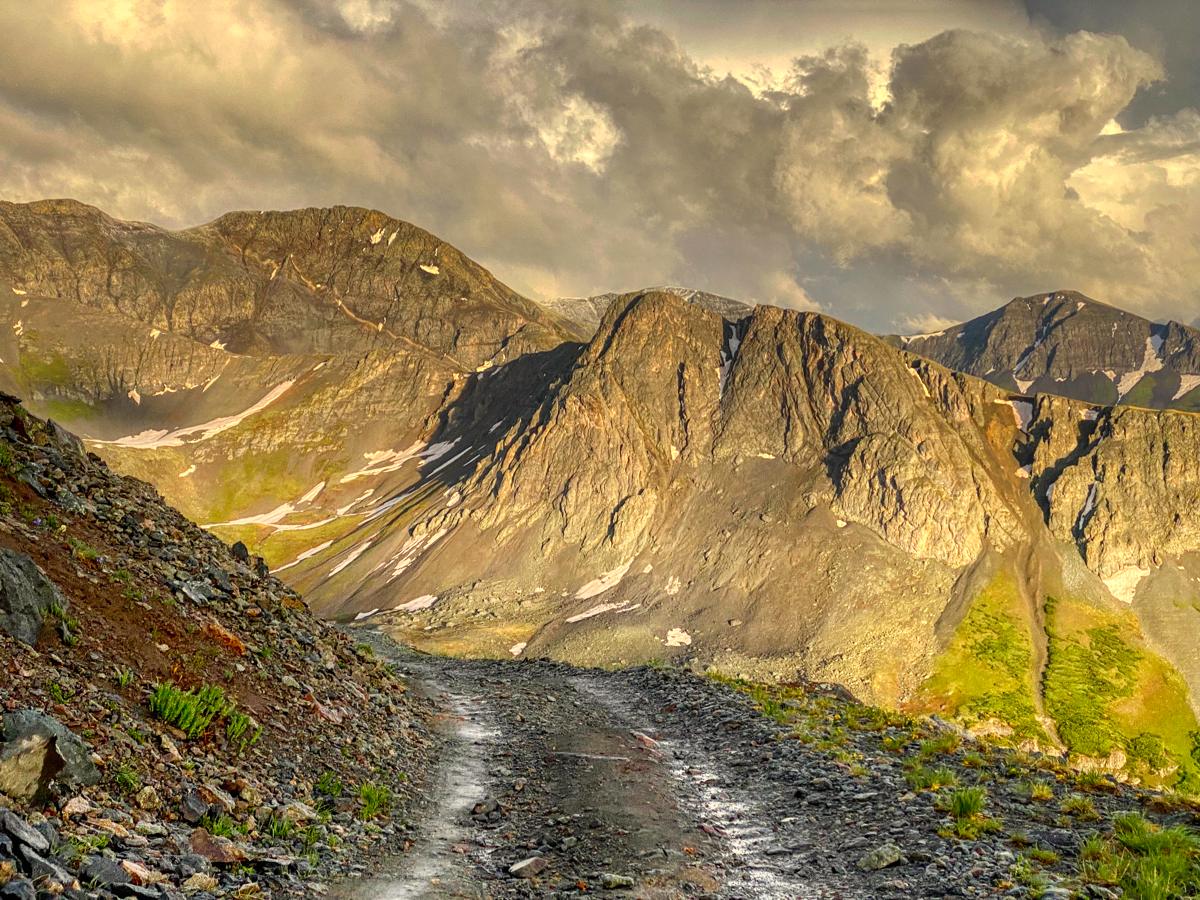For plenty of my races, I’ll simply back off the training a couple days out before reading the event website and packing my gear the night before and that’s fine by me. However, if I’ve got a 100 miler that I’m focusing on, I might start my final preparations up to a month in advance.
This article looks at how a runner might go about preparing for a 100-mile focus race in the month before the event using my path to the 2022 High Lonesome 100 Mile as an example.
Read the Website/Runner Manual (When you enter the race)
OK, so my aim here is to talk about the final preparations for a focus 100-mile race, rather than the heart of training, but I will reiterate that it’s well worth the time to research the course’s terrain, technicality, likely weather, and any other outstanding features that you can and should incorporate into your training well ahead of the race. Reading the website, reading past runner manuals, and talking to folks who’ve run the race are great ways to build up your knowledge before building up your course-specific training.
Reread the Website/Runner Manual (3 to 4 weeks out)
Whether the primary resource for a given race is a fantastic runner manual or a couple of key pages on the race website (course, aid stations, rules), give them a solid reading three or four weeks before the race. Hopefully, you’ve read these before you signed up, but it’s important to have the broad picture and some of the details in mind as you plan, prepare, and pack for your race.
Initial Prep and Pack for the Race (2 to 3 weeks out)
Even if your big 100 miler starts in your own town, you’ll likely have to gather your race day kit, pack your drop bags, and/or prep other materials. OMG … I’ve waited for the very last minute to do this for nearly every major 100 miler I’ve run. It leaves me stressed and working until the last minute, and it’s so unnecessary. (This is a major note to self here!)
For High Lonesome, I’ll start prepping my race needs three weeks out. Part of this is that I’ll leave for the race area on Tuesday of race week after wrapping up iRunFar’s Hardrock 100 coverage on Sunday, so I’ll be exhausted and I won’t have much time, but, just as importantly, I want this to be as low-stress as possible.
My three major steps will include:
- Making a small aid station reference card;
- Packing my drop bags; and
- Firmly choosing my race day gear.
For as long as I’ve been running 100 milers, I’ve always created a small reference card that notes aid stations, distances between them, whether I’ll have a drop bag there, and time cutoffs, as well as at least one set of reasonably projected splits. While you may have had time goals in mind when you signed up for the race, now’s a good time to reassess your race goals based on your actual fitness.
Packing drop bags has always been a last-minute task for me, but not this time. I hope that I’ll have made a first pass at packing my drop bags. In doing so, I’ll have a few items that I’ve not bought yet, perishable items, and a few gear items I won’t pack until the day before the race. Through the drop bag packing, I’ll:
- Make a list of items I still need to buy; and
- Make a list of last-minute items to pack for my race kit and drop bags.
Easy peasy. No need to think through what I need in the few days before the race. I’ll have a list of items to buy and items to pack, and they’ll all quickly go in the appropriate drop bags or my race-morning bag on the day before the race.
While I’ve got a few go-to gear pieces that are a given for race day, I’ve also got some gear choices left to make. Plus, a few of those picks might change a bit based on the weather forecast. Anyway, I’ll plan on pulling my most likely race day kit together and going for at least a couple-hour run with it all put together. That way, I’ll know if everything works well together.
Don’t Forget to Taper (10 to 20 days out)
Whether we know we’re super fit or our fitness is coming in a bit wanting, tapering for a focus 100-mile race is vital. We’ve all got different backgrounds with sports, training lead up, injury histories, life commitments, and the like, so I won’t try to be overly prescriptive here. That said, if you’re aiming for a “good performance,” please give yourself at least a 10-day taper, a two-week taper is great, and there’s nothing wrong with starting to taper off the training three weeks out.
Given the realities of my life (less than ideal training, reporting on Hardrock), I’ll have at least a two-week taper and, more realistically, a month’s taper going into High Lonesome.
Rest Up (1 to 2 weeks out)
Sure, you’ll want to sleep as well as possible the few nights before the race, but, to the extent possible, you’ll want to lighten your commitments and lower your stress level during the last week or two before your race. This might mean temporarily avoiding or rescheduling some commitments (I rescheduled a work meeting from three days before High Lonesome) as well as doing your best to mitigate any unexpected stress that comes up along the way.
Final Prep (The day or two before the race)
Even with good planning and prep, there’ll be some things to do the day before a focus 100 miler.
Since High Lonesome is a summer race, I’ll give my hair a fresh buzz and trim the goatee. Toe and fingernails will be cut. Any batteries topped off. Perishables cooked. Last-minute items put into drop bags. High Lonesome has a check-in, mandatory briefing, and shoe cleaning the day before. I’ll hope to do this all in a cool and calm manner and to get to bed as early as I can — probably between 8 and 10 p.m.
Race Morning (The day of)
Everyone’s pre-race routine is different and hopefully dialed. I like having all my race day kit at the ready the night before. After a quick rinse, it’s time for sunscreen, lube, chapstick, and the like, while sipping on some coffee and a simple breakfast. Other runners have other tasks in their pre-race routine.
Early on in running 100 milers, I may have had a checklist (honestly, I can’t remember, but I probably did), but, now, I have everything I need to do on race morning in a single bag. Every time I do a task, I take that item out of the bag. When the bag’s empty, I’m done and off to the start line!
Call for Comments
How do you get ready ahead of a 100 miler that’s important to you?




